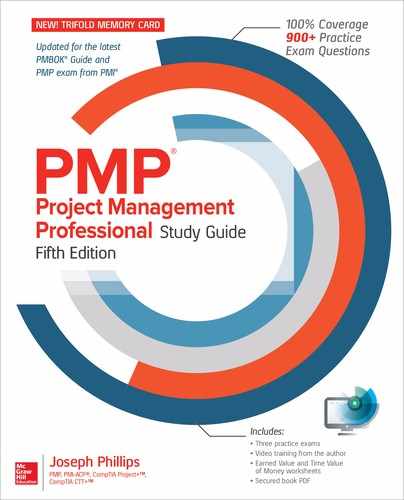Book Description
This fully integrated study resource contains complete coverage of every topic on the PMP exam
This highly effective self-study guide contains all of the information you need to prepare for the latest version of the challenging Project Management Professional exam. Electronic content includes the Total Tester customizable exam engine, worksheets, reference PDFs, and more than an hour of video training from the author.
Fully updated for the current PMI Project Management Body of Knowledge (PMBOK® Guide), PMP Project Management Professional Study Guide, Fifth Edition contains more than 900 accurate practice exam questions. Each chapter includes a list of objectives covered, a chapter review, key terms, a two-minute drill, and a self-test with detailed explanations for both the correct and incorrect answer choices.
• Offers 100% coverage of all official objectives for the PMP exam
• Downloadable full-color, memory card for studying anywhere
• Written by a project management consultant and bestselling author
